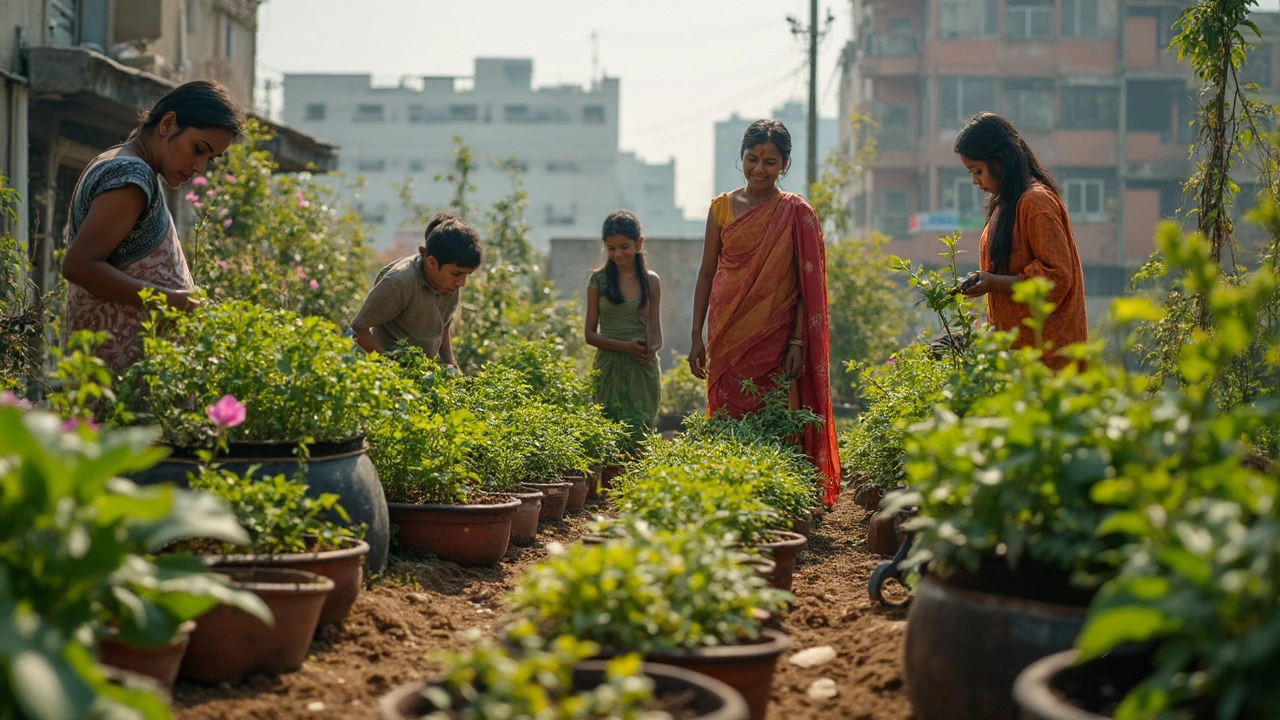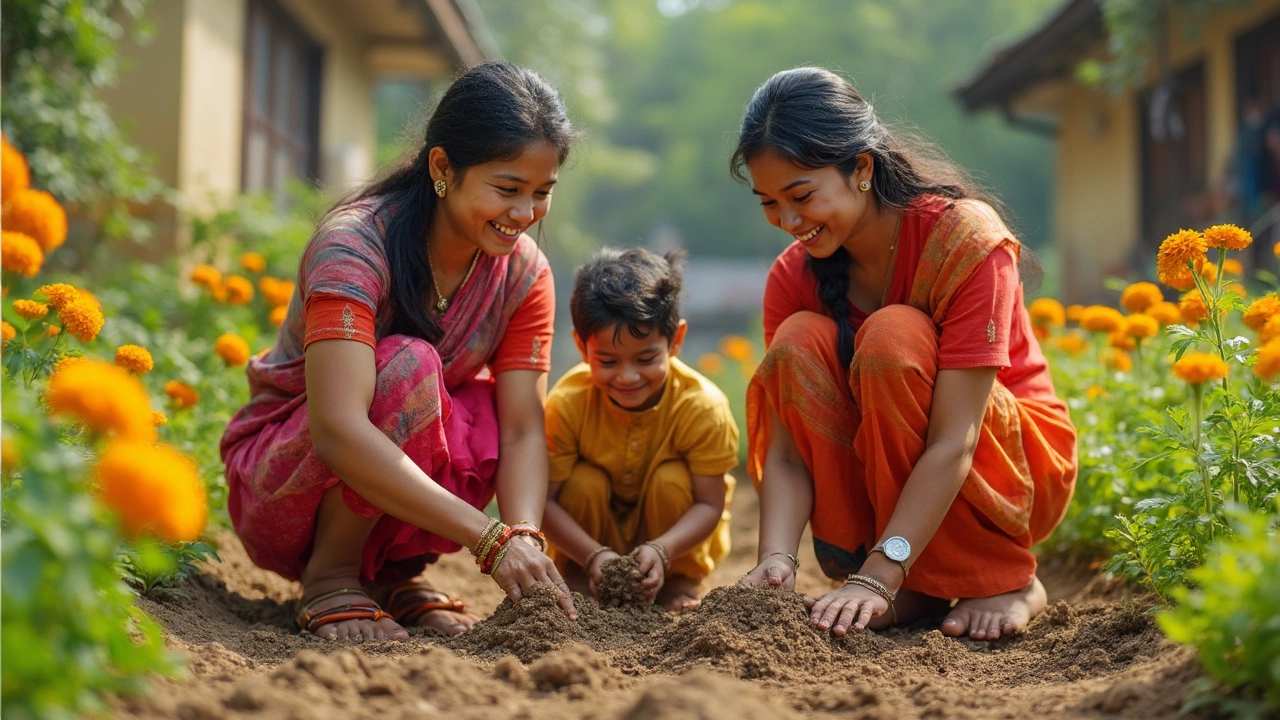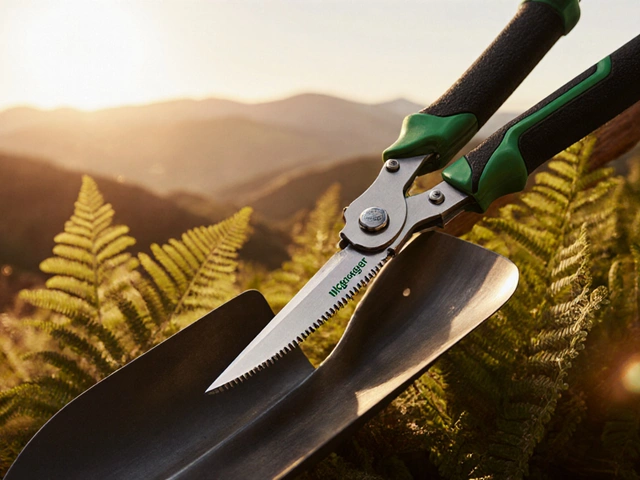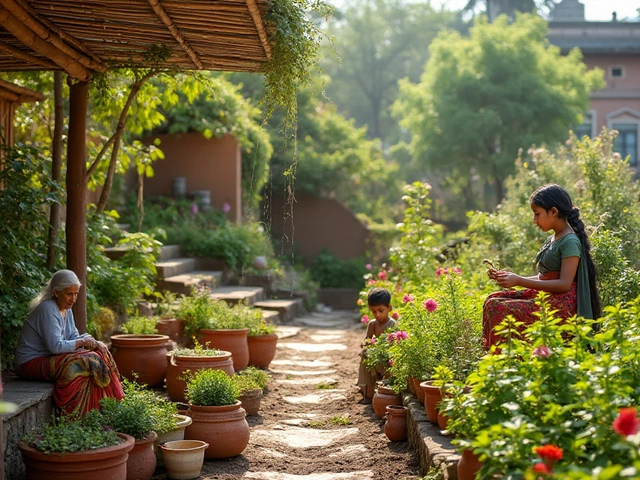If your plants just don’t seem happy no matter what you do, the problem probably starts underground. Bad garden soil can ruin your gardening hopes fast—think rock-hard clay, dirt that won’t hold water, or stuff so sandy your hose water vanishes in seconds. Throwing fertilizer at it rarely helps for long, and bagged "miracle" soil only masks the problem.
But you don’t need fancy products or a chemistry degree to turn sad dirt around. Most yard dirt just needs a little organic matter—a good mix of leaves, kitchen scraps, or straight-up compost. These not only add nutrients but change the way your soil holds water and air, which roots absolutely need.
Start simple. Grab a handful of your dirt and squeeze it. Does it stick together like modeling clay or crumble and run through your fingers? That quick check will tell you almost everything about drainage, structure, and the work ahead. Even if your dirt is pure clay or gritty sand, there’s a fix—and it doesn’t have to cost a fortune.
- What Makes Dirt 'Bad'?
- Testing Your Soil the Easy Way
- Compost: The Secret Ingredient
- Fixes for Sand, Clay, and Everything Between
- Fast Tricks That Actually Work
What Makes Dirt 'Bad'?
Most folks picture dirt as just regular ground, but when it comes to garden soil, there are a bunch of ways your dirt can mess things up for plants. Seriously bad dirt doesn’t just look ugly—it can turn gardening into a real struggle. So, what does 'bad' actually mean for your yard?
First big issue: poor texture. If your soil is mostly clay, it feels sticky, holds water forever, and squishes into chunky lumps that choke roots. Plants can drown or just refuse to grow. On the flip side, if your dirt’s all sand, water and nutrients drain away before plants even get a taste, so you’re left with wilted stems and sad leaves.
Next up, low organic matter. Healthy soil needs bits of dead leaves, compost, manure, or even grass clippings to feed the good bacteria and worms. Dirt without organic stuff becomes hard, dry as a bone, and basically lifeless—it’s like expecting a steak dinner from an empty fridge.
Bad soil might also be too acidic or alkaline, depending on the rocks and old fertilizers where you live. Most veggies like things slightly acidic, but if the pH is way off, plants start showing yellow, twisted, or stunted growth, no matter how much you water or feed them.
Other warning signs? You’ve got crummy drainage if puddles stick around for hours, or your beds dry out in a blink. Sometimes city yards have heavy metals or trash mixed in—roots hate that. If weeds grow better than the flowers you plant, guess what? It’s not just your luck, it’s your soil playing favorites.
Knowing what’s wrong—whether it’s the texture, lack of organic matter, poor drainage, or the wrong pH—lets you actually fix bad dirt instead of just fighting it. And trust me, every yard problem has a down-to-earth solution.
Testing Your Soil the Easy Way
Before you throw anything at your garden, you’ve got to figure out what your dirt needs. Luckily, you don’t have to send soil samples to a lab or spend big bucks to get useful answers. Start in your own backyard with a few quick tricks that anyone can do.
- Texture test: Take a handful of moist soil and squeeze it. If it forms a sticky ball, you've got clay. If it falls apart like sugar, it's probably sandy. If it holds together but crumbles when you poke it, that’s the sweet spot—loam.
- Drainage test: Dig a hole about a foot deep and fill it with water. Let it drain out, then fill it again and time how long it takes to disappear. One to three inches per hour is perfect. Slower means clay soil, faster points to sandy dirt.
- Earthworm count: Dig up about a shovel’s worth of soil. If you spot less than three worms, your soil is probably low on organic matter or too acidic.
If you want numbers, home test kits are cheap and work for basic checks. These kits measure pH and sometimes nutrients like nitrogen, phosphorus, and potassium.
| Soil Type | Quick Way to Spot | What It Means for Plants |
|---|---|---|
| Clay | Sticky, hard to dig, poor drainage | Plants may drown; roots struggle |
| Sand | Loose, gritty, water drains fast | Plants dry out and miss nutrients |
| Loam | Crumbly, holds shape but breaks up | Best for almost everything |
Don’t forget to check your garden soil’s pH. Most veggies and flowers like it slightly acidic, between 6.0 and 7.0. If your pH is way off, nutrients can get locked up no matter how much you feed your plants.
This whole process takes maybe half an hour, but it helps you fix the real problem instead of just guessing and hoping for the best. Test your dirt once a year, especially if you add lots of compost or mulch. That way, you’ll know what’s changing—and what actually works.

Compost: The Secret Ingredient
If you want to fix lousy soil, compost works better than almost anything else. Cheap, easy to make, and packed with nutrients, it’s what every healthy garden has in common. Here’s why compost is a game-changer: it feeds your plants, improves texture, holds water, and even helps crowd out some diseases and pests.
Adding just 1-2 inches of compost to your beds each year changes everything. Check this out: a Cornell University study found clay-heavy soil can improve by 35% in water-holding ability after just two years of steady composting. Plus, compost boosts the good bacteria and fungi in your dirt, which plant roots love.
- Finished compost looks dark and crumbly. It should smell earthy, not gross.
- You can use yard waste, grass clippings, fruit/veggie peels, coffee grounds—even shredded cardboard.
- Skip meat, dairy, and oily foods—they attract pests and stink up the pile.
- A simple pile works, but a basic bin keeps things tidier and helps it break down faster.
How do you actually use it? Spread a couple inches right on top of your garden soil, then fork it in a little if you feel fancy. Or just let the worms do the work. Compost isn’t just for starting the season—use it year-round as a mulch or booster for tired spots.
Take a look at how compost stacks up against other common soil fixes:
| Amendment | Main Benefit | Cost | Long-Term Impact |
|---|---|---|---|
| Compost | Feeds plants, improves soil structure | Low (free if homemade) | Excellent |
| Bagged topsoil | Tiny boost, mostly filler | Moderate-high | Short-lived |
| Peat moss | Better water holding | Moderate | Good (but not sustainable long term) |
| Sand | Improves drainage (in clay) | Low-moderate | Mixed |
If you do one thing to fix garden soil, make a little compost and use it often. It’s the easiest, smartest upgrade for any garden—whether you’re starting fresh or digging yourself out of a mess.
Fixes for Sand, Clay, and Everything Between
Different dirt, different problems. Sandy soil drains so fast that roots barely get a sip of water. Clay soils are the opposite—they hold onto water tighter than a miser and end up choking plant roots. The trick is changing the structure, and you don’t do that by just dumping fertilizer or garden soil from the store.
Let’s break it down:
- Sandy soil: This stuff feels gritty and falls apart in your hand. It heats up fast and drains water so quickly that plants dry out if you miss a day with the hose.
- Clay soil: Heavy and sticky, this soil forms a ball you can bounce. It’s hard to dig, turns rock hard when dry, and gets soggy and compacted with water.
- Loam: This is the dream—the stuff you want, with a balance of sand, silt, and clay. But don’t sweat it if yours isn’t perfect.
Here’s what you can do, no matter what you’re working with:
- Add organic matter: This is your main fix. Compost, rotten leaves, or even grass clippings can transform both sand and clay. About 2-3 inches worked into the top 6 inches of soil does wonders, and you can’t really overdo it.
- For sand, mix in compost and a little well-rotted manure. Sprinkle in some coconut coir or peat moss if you want extra water-holding boost, but skip those if you’re on a budget—the organic matter alone will get results.
- For clay, use compost, shredded leaves, and gypsum if you want. Gypsum helps clay break up—just, don’t bother if you already have decent drainage. Always skip sand, since adding it to clay makes concrete, not better soil.
- Keep mulching. Any yard waste or straw on top will keep moisture in and slowly add more good stuff as it breaks down.
- Grow “cover crops” over the off-season. Plants like clover, vetch, or rye break up compacted clay with their roots and chunk up sandy soil at the same time by adding more organic material each year.
| Soil Type | Problem | Best Fix |
|---|---|---|
| Sandy | Drains too fast, low fertility | Compost, manure, mulch |
| Clay | Poor drainage, compaction | Compost, shredded leaves, gypsum |
| Loam | Usually good, needs upkeep | Regular organic matter, cover crops |
Stay patient. Even the worst dirt turns around with one or two seasons of this treatment. If you stick to adding plenty of compost and mulching every year, your soil keeps improving—plants show you by growing faster, tasting better, and not keeling over every time the weather changes. That’s the magic of fixing garden soil the right way.

Fast Tricks That Actually Work
There’s no time for wishful thinking when you want your plants to bounce back quickly. Good news—you don’t have to wait years to see a change. These fast fixes for garden soil deliver results you can feel and see, often in just a few weeks.
First, try what pros call “top-dressing” with compost or bagged worm castings. Just spread an inch on top of your soil. Rain and worms will draw it in, making even rough clay or barren dirt softer and richer. Got coffee grounds from your morning brew? Sprinkle them over the dirt before you water. They help attract worms and actually add small amounts of nitrogen—great for hungry veggies and flowers.
If your dirt dries out in a snap, try mulching. Toss down straw, grass clippings, or even old leaves (avoid black walnut or anything sprayed with chemicals). This not only keeps water from evaporating but also smothers weeds and keeps the soil cooler during hot stretches.
- Compost teas: Steep a shovel of compost in a bucket of water for a day or two, stir it up, and pour it right over tired plants or bare dirt. It’s like a quick smoothie for your soil.
- Epsom salt boost: Sprinkle a handful per square yard if your tomatoes or peppers have dull leaves. The magnesium helps them green up, but don’t overdo it—this is a ‘sometimes’ fix.
- Cover crops—quick style: If you’ve got a blank spot, throw down fast-growing cover crop seeds like clover or hairy vetch. Just a few weeks of growth sends roots deep, breaks up the dirt, and when you chop it down, all that green goodness becomes food for your soil.
One respected soil scientist, Dr. Elaine Ingham, sums up the real secret behind these hacks:
“Feed the soil, not the plant. If your soil is healthy, your plants pretty much take care of themselves.”No fancy gadgets needed—just the right stuff tossed on top or mixed in by hand.
Don’t forget to water. Even the best tricks need moisture to kick in. So after you add anything new, give the area a good soak and watch what happens over the next week or two. You’ll notice plants perking up, earthworms moving in, and better results every season.





